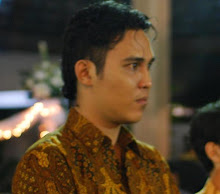
At the end of Malioboro road, you will come to a cross section. It seems that people are facing the choices for further destination. Most of them prefer to go straight on to the Palace area; it means that unconsciously they have skipped hidden enchantment in the area, namely Kauman village. An area that you will have encountered had you chosen to turn right, passing through K.H. Ahmad Dahlan Street, and enter a gateway on the left side.
Kauman was a village where 9 ketib or Muslim leaders were living and were authorized by the kingdom to handle religious affairs. Since years ago, this village has been playing major role in terms of Islamic religious movements. During independence struggle time, it is the founding place of Muhammadiyah Islamic movement. By the time, a Moslem named K.H. Ahmad Dahlan as the founder of the movement was apprehensive for the community that was trapped into mystical things. Besides, K.H. Ahmad Dahlan also perfected the dire ction of Mecca 24 degrees northwestwards(to the direction of al Haram mosque in Mecca) and omitted the habit of holding ceremonial meals for dead persons.
ction of Mecca 24 degrees northwestwards(to the direction of al Haram mosque in Mecca) and omitted the habit of holding ceremonial meals for dead persons.
An arching gateway will welcome anybody who is entering Kauman village. The arch form is one of the characteristics of Islamic buildings that are much influenced by Middle East. On top of the gate, there is a depiction of a green circle with yellow sun shining 12 rays in it. The picture is now utilized as symbol of Muhammadiyah organization and other institutions under its auspices.
Wandering about the gangs in Kauman village must be done on foot. The small alleys were purposely designed in such a way that vehicles would be difficult to enter. The design was meant for preventing noise from disturbing the santri (students of Islamic institutions) to study and it was the realization of equity philosophy in Kauman where every body entering the area are obligated to leave his social status by walking on foot.
On both sides of the alleys, you will see various buildings with different architectures. A yellow house functioning as a retail store stands just close to the gate. The house has big window, doors and rooms, and ventilations decorated with color glasses showing European architectural influence. Walking to the end of the ally and turn to right, you will see a white house with window and doorframes of brown color. The arch form of the upper part of window leaf shows strong influence of Middle East. Right in front of the house is a blue house with the design of the roof similar to Kalang house in Kotagede.
At the end of the gang before you turn, you will find a monument surrounded by small garden. There is writing of "Syuhada bin Fisabillillah", year 1945-1948, and list of 25 people. The monument is dedicated for Kauman inhabitants who died during their independence struggle. The word 'syuhada' denotes that Kauman community considers the heroes died a martyr's death.
In addition to read the list of dead heroes, you can also see surviving strugglers; one of them is H. Dauzan Farook who lives near the exit of Kauman village. He told YogYES that he joined the Great Commander General Sudirman during the guerrilla. He still keeps some of his photographs with the Great General, newsletters in independence war, and pieces of news from newsletter.
In Farook's house, you will learn that he is still struggling up to now. He founded a moving library named Mabulir. Everyday, he rides his bicycle to offer his books to the community. People may borrow books from him with one requirement that he or she has to gather at least five other people. To his opinion, the requirement is one form of awareness to other people and invitation to share knowledge to others.
A high school that has been operating since 1919 is also found in this village. Initially, the school was named Hooge School Muhammadiyah and it was then changed to Kweek School in 1923. The school that was founded by K.H. Ahmad Dahlan was divided into two in 1930; one was for male and the other for female students. Boys school was named Mualimin while the one for girls was named Mualimat. Later, his wife also founded Aisyah Foundation for women.
The most well known building in Kauman complex is the Great Mosque. The mosque as the main mosque in the Kingdom area was founded 16 years after the foundation of Yogyakarta Kingdom. The Javanese architecture of the mosque was entirely designed by Tumenggung Wiryakusuma. The building consists of main building, verandah and yard totaling 13,000 m2. The verandah building is differentiated from the main building. The supporting poles of the mosque in the main building, for example, were of round, plain form as many as 36 while in the verandah the 24 poles have stone base with cloud motif.
If you have completed your tour to this village, you will acknowledge the intelligence of the community in this small village and believe that Islam has brought improvement. Some Indonesian Islamic leaders such as Abdurrahman Wahid and Amien Rais once were studying here. If you would like to complete your wander, please visit Ahmad Dahlan small mosque. In the past, the building was utilized by Ahmad Dahlan to hold Sidratul Muntaha, the lesson of reciting Koranic verses and preaching. The other legendary small mosque is Putri Ar Rosyad that is the first small mosque (langgar) for women in Indonesia. How was it; quite interesting? If this satisfies you, then you may leave for the Palace complex through the village exit.


No comments:
Post a Comment